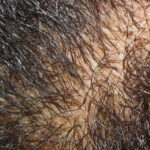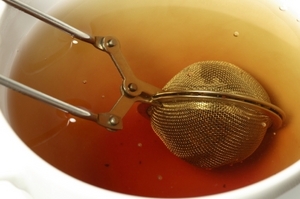Baldness and thinning of the hair is often thought of as a male problem. Nothing could be further from the truth. Women, too, suffer from hair loss; and bald spots in women can be particularly difficult to deal with since balding isn’t socially acceptable in women. Bald men are often thought of as “distinguished”, but baldness doesn’t usually carry the same connotation in women. What causes baldness in women and what can be done about it?
Balding in Women: How Does It Present Itself?
Baldness in women usually involves patchy loss of hair, bald spots, and hair thinning rather than the kind of diffuse baldness seen in men. In men, balding, at least initially, involves loss of hair around the crown and temples, whereas hair loss in women frequently involves more diffuse thinning that involves the entire head.
What Causes Baldness in Women?
Some women are genetically predisposed to hair loss in much the same way as men. This problem may become a problem around the time of menopause when hormone levels fluctuate, and a woman may produce more testosterone. Excess testosterone can be converted to a testosterone derivative called DHT which blocks the hair follicle – leading to bald spots in women and generalized thinning of the hair.
Balding in Women: Other Causes
Balding in women can also be associated with certain medical conditions. An underactive thyroid is a common cause of hair loss in women. This can usually be diagnosed through a blood test and the hair loss can be corrected by supplementing with thyroid hormone. Malnutrition, particularly a lack of iron or protein, can also cause bald spots in women. Correcting the underlying nutritional deficiencies usually fixes the problem.
Another condition that causes baldness in women is alopecia areata, an autoimmune type disease that leads to hair loss, usually in patches. In some people this condition can progress to complete baldness. The cause of this disease is unknown, but is thought to involve the body producing antibodies against its own hair follicles. The good news is this condition is usually self-limited and in nine out of ten cases the hair will grow back without treatment – although it can take up to a year.
Finally, some medications can cause hair loss. The list of drugs that can cause balding or thinning of the hair in women is quite long, so it’s important to check with your doctor if you’re on prescriptions and are experiencing hair loss. The solution could be as simple as switching medications.
How is Balding in Women Treated?
Some women benefit from use of Minoxidil which has been FDA approved to treat baldness in women. Not all women will respond and the hair loss can recur if the drug is stopped. Unfortunately, this treatment is expensive. A newer drug called Finasteride has the potential to treat balding in women, but is only currently approved for use in men. Most nutritional supplements have not been shown to be effective unless there’s a deficiency and most online “cures” don’t work. Fortunately, there are a variety of wigs and hairpieces that can cover and fill in the missing hair.
References:
http://cme.medscape.com/viewarticle/528132?rss



